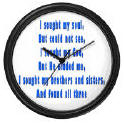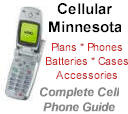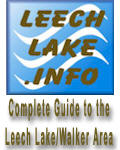

MRP Site Navigation
MRP Home Page
MN Treatment Centers
National AA Intergroups
National NA Intergroups
National Al-Anon Intergroups
Other Recovery Groups
Online Meetings
AA History
Recovery Events
Links
Alcoholism
Links
Codependency Links
Commercial
Sites
Drug Addiction
Links
Eating Disorder Links
Gambling
Addiction Links
Gay
& Lesbian Links
Mental
& Emotional Health
Religion
& Spiritual Links
Sexual Addiction Links
Women's
Issues
Bookstore
AA Conference Approved
General AA
AA History
General Alcoholism
NA Conference Approved
Drug Addiction
Al-Anon
Approved
General Codependency
Eating Disorders
Compulsive Gambling
Sexual Addictions
Internet Addictions
General
12 Step
Meditation
Jewelry
Gifts
Medallions - General
Medallions - AA
Medallions - NA
Medallions - CO
Audio
Reading
Room
AA Literature
Recovery Articles
Personal
Stories
People In Recovery
Graphics
Supporting the Minnesota Recovery Page
Contact Us
Like this page?
Click here to add
to your favorites

Addictions and Native Americans
Click to see many
more medallions

Relax, God is in Charge Poster


The Language of Letting Go Journal
![]()

Twenty-Four Hours a Day Desktop Mug

Serenity Scope Pendant - 14k gold-plated

"I Sought My Soul..." Gratitude Wall Clock

Sex, Drugs, Gambling & Chocolate: A Workbook for Overcoming
Addictions

Butterfly Keep It Simple Medallion
Click to see many
more medallions

Prayers for the Twelve Steps-A Spiritual
Journey

Releasing Guilt About Gambling

Recovery Books Teakwood Keepsake Box

Going for Broke: The Depiction of Compulsive
Gambling in Film

Sharing Recovery Through Gamblers Anonymous

Official "I Did Not Buy This Hat From Duane"
Hat

Acceptance Affirmation Necklace

Dealing with Depression in 12 Step Recovery

Serenity Prayer Mini Counted Cross Stitch
Kit

My Mind Is Out To Get Me
Humor And Wisdom In Recovery

New Testament
Recovery Edition

Serenity Prayer with Three Doves Print
Can't find what
you're looking for?

God’s Window Afghan
“When God closes a door, he always opens
a window.”
| Compulsive Gambling Merchandise | |
| Books | Videos | Pamphlets | |
|
|
|
| Compulsive Gambling Books | |
|
A Day at A Time - Gamblers Anonymous
(Hardcover)
Hardcover, 384 pages. Author: Anonymous
Item: 7655 An essential recovery tool for compulsive gamblers, these daily reflections and prayers offer us hope, support, and guidance throughout the year. Also addresses the issues and fears often faced by those of us in recovery. |
|
|
|
|
|
|
The Gambling Addiction Patient Workbook
Paperback: 120 pages "Dr. Perkinson does and excellent job of bringing together and individualizing 12 step treatment for addicts and gamblers including identifying character defects and relapse prevention. Comments from patients include, 'it has opened my eyes to my gambling and behaviors associated with it' and 'I feel it is easy to work and very self explanatory.'" |
|
|
|
|
|
Don't Leave It to Chance: A Guide for Families of Problem Gamblers
by Edward Federman, Charles Drebing, Edward J. Federman Gambling can cause disruptions in every area of life, and the devastating effects don't stop with the gambler. Like any addiction, gambling takes its toll on the entire family, causing loss of trust, financial hardship, and difficult dynamics. Based on the authors' extensive research and filled with hands-on questionnaires, exercises, and charts, this book provides relatives of problem gamblers with a comprehensive program of cognitive-behavioral strategies to help them overcome the negative hold the habit has on their lives. It helps readers identify the problem, understand its origins, and assess its impact on the gambler and his or her family. Then it lays out easy-to-follow "action steps" to manage the problem, repair relations, recover financially, and get professional help if necessary. |
|
|
|
|
Born to Lose
Memoirs of a Compulsive Gambler
Softcover, 304 pp. Author: Bill
Lee Item: 2486 "My history of gambling really began before I was born." So opens Born to Lose, Bill Lee's self-told story of gambling addiction, set in San Francisco's Chinatown and steeped in a culture where it is not unheard of for gamblers (Lee's grandfather included) to lose their children to a bet. From wagering away his beloved baseball card collection as a youngster to forfeiting everything he owned at black jack tables in Las Vegas, Lee describes what gambling addiction feels like from the inside and how recovery is possible through the Twelve Step program. |
|
|
|
|
|
|
A Way to Quit Gambling: (For Problem
Gamblers)
by John Chin Paperback: 109 pages Although gambling is enjoyable entertainment and can provide unparalleled excitement, it can financially drain and ruin some people. This manual is a roadmap and workbook for the problem gambler or potential problem gambler, who can not control the amount of money he/she loses, to seriously give up on gambling. This work is based on over 25 years of experience in gambling by the author, who shares his insight with the reader. While attending college, the author began gambling at 18 in local New York City OTB parlors and New York horse racing tracks. Then he got caught up in casino gambling, when it debuted in Atlantic City. He also dabbled in most other forms of gambling, in lotto, poker, and sports betting. As much as the author loves to win, he hates to lose in gambling. So, after 25 years and losing a small fortune, he decided to give up on his quest of becoming a consistent winner. This book describes the way he finally coped with and quit gambling. There is also ample space for the reader to write down his/her own thoughts on how to quit gambling to personalize the manual for his/herself. |
|
|
|
 |
Double Down: Reflections on Gambling
and Loss
by Frederick Barthelme, Steven Barthelme
Paperback: 208 pages At first, this dark memoir seems
like a simple confessional about how two fiftyish writer-academics
lost a quarter-million-dollar inheritance in the late-night world
of Mississippi riverboat casinos. (In 1997, the brothers were charged
with cheating a Mississippi casino and still await trial.) As book-smart
gamblers, the Barthelmes indulge in overtipping and betting ludicrous
amounts; they are smarter-than-thou, which is their downfall. Perhaps
some readers will see the deaths of the Barthelmes' parents as sufficient
cause for their fall from grace; faced with real pain, the brothers
prove inept at problem solving. But the gambling, compulsiveness,
and midlife boredom predate their parents' deaths; and the gambling
snowballed because of their new-found money, which the brothers
burn out of resentment of their Napoleonic father. Beautifully evoking
the gamblers' addiction, their mesmerizing account is best read
as a novel Camus might have imagined, with the writer/protagonists
as their own lost characters. A work of high art; enthusiastically
recommended. - |
|
|
|
|
|
Understanding and Treating the Pathological
Gambler by Robert Ladouceur, Caroline Sylvain, Claude Boutin, Celine Doucet Paperback: 183 pages Publisher: John Wiley & Sons; 1st edition (May 15, 2002) Understanding and Treating the Pathological Gambler provides a combination of theory and practical solutions for the clinician working with pathological gamblers. The first half of this title discusses the history, theories and evaluation of gamblers and gambling while the second provides clinicians with interventions, based on scientific research, for the cessation of abusive gambling, including strategies for long-term abstinence and relapse prevention. |
|
|
|
|
|
Losing Your Shirt - Second Edition
: Recovery for Compulsive Gamblers and Their Families
by Mary Heineman Paperback: 280 pages
This book is an excellent source for understanding not only the gambler and his/her addiction, but the family members touched by the addiction. It is so well-written, that all members involved in the gambler's life (including the gambler) can relate to its message. For the spouse of a gambler, it can help you to get to the most important stage of grief, which is acceptance. Understanding breeds acceptance. |
|
|
|
|
|
This Must Be Hell: A Look at Pathological
Gambling
by Hale Humphrey Paperback: 116 pages
Are you at risk for developing a gambling problem? Do you know someone who is? This book provides an inside look at the hell of the pathological gambler through actual case studies, and provides guidance in how to identify the problem and obtain necessary help. |
|
|
|
|
|
Gambling and Gaming Addictions in
Adolescence (Parent, Adolescent and Child Training Skills)
by Mark Griffiths Paperback: 56 pages
The guide gives the practitioner an understanding of why children and adolescents may come to play fruit machines/video games to excess and includes knowledge about the risk factors involved in this. It includes practical and common-sense interventions that may be beneficial for such children and adolescents and also includes practical advice to give to parents facing their child's behavioural addiction. |
|
|
|
|
|
Best Possible Odds: Contemporary
Treatment Strategies for Gambling Disorders
by William G. McCown, Linda L. Chamberlain
Hardcover: 260 pages An estimated 3-50% of all individuals who gamble will become compulsive gamblers. This "invisible addiction" can be financially and emotionally devastating to both the gambler and his/her family. This timely clinical manual explains why gambling is on the rise and the factors which distinguish recreational and compulsive gamblers. Mental health professionals will learn how to assess and treat compulsive gamblers using a variety of interventions: behavior therapy, inpatient treatment, family therapy, and 12-step programs. |
|
|
|
|
|
Compulsive Gambling - A Medical Dictionary,
Bibliography, and Annotated Research Guide to Internet References
This is a 3-in-1 reference book. It gives a complete medical dictionary covering hundreds of terms and expressions relating to compulsive gambling. It also gives extensive lists of bibliographic citations. Finally, it provides information to users on how to update their knowledge using various Internet resources. The book is designed for physicians, medical students preparing for Board examinations, medical researchers, and patients who want to become familiar with research dedicated to compulsive gambling. If your time is valuable, this book is for you. First, you will not waste time searching the Internet while missing a lot of relevant information. Second, the book also saves you time indexing and defining entries. Finally, you will not waste time and money printing hundreds of web pages. |
|
|
|
|
|
Compulsive
by Jim Nelson Paperback: 265 pages
COMPULSIVE is the fictional account of one man's gradual descent into the world of compulsive gambling. It takes him through the incredible highs and the crushing lows of the "gaming" addict. Many readers will recognize their own feelings, their own addictive tendencies as they follow Don Curtis into the exciting, neon-splashed world of the gambler. |
|
|
|
|
|
Overcoming Compulsive Gambling
by Alex Blaszczynski Paperback Overcoming Compulsive Gambling has been developed as a self-help manual by Professor Alex Blaszczynski. He pioneered the cognitive behavioral techniques described in this guide, and they are now taught in countries all over the world. For those to whom gambling is not just a 'flutter' but a compulsion adversely affecting every aspect of life, for their families and friends, and for those working in the medical profession, this guide will prove indispensable. |
|
|
|
|
|
You Bet Your Life: The Burdens of
Gambling
by Neil David Isaacs Hardcover: 274 pages
The United States is a gambling nation. Casinos, parimutuels, and convenience store lotto kiosks are easy to find, and back door action is almost as easy. With over $600 billion in just the legal bets, it is clear that gambling is the new national pastime. Yet most of the conventional wisdom about gambling is distorted, misleading, or even dangerous. Despite gambling’s prevalence, there is little popular understanding about how it works, what it involves, or the great risks it poses to individuals and society. In You Bet Your Life, Neil Isaacs, himself a lifelong gambler, a licensed therapist specializing in the treatment of pathological gamblers, and a writer and scholar of gambling literature, methodically debunks several prominent gambling myths. The law of averages is the first to fall, followed by the belief that gambling is inherently sinful, immoral, or criminal. He also tackles the misconception that gamblers are always motivated by the money. Dozens of examples, from fiction and film as well as case histories, show the different ways in which gambling can be abused and misunderstood. Isaacs avoids oversimplifying gambling addictions, their causes, and treatment as he shows how habitual gambling can lead to compulsive gambling. He argues that pathological gambling as not just a simple impulse control disorder, making th is an invaluable book for anyone who knows a gambler. |
|
|
|
|
|
When the Chips Are Down: Problem Gambling in America
by Rachel A. Volberg, Richard C. Leone
Paperback: 139 pages Rachel Volberg's "When the Chips are Down" is the best and most cutting-edge look at problem and compulsive gambling on the market. The book explains in a very clear and insightful style the latest scientific research into the causes of problem and pathological gambling. It also details what is known about the prevalence of both pathological and problem gambling, including research done by Volberg, a pioneer in the field. But, perhaps even more important, "When the Chips are Down" includes a very thorough and thought-provoking analysis of public policy that resulted in the spread of legal gambling to 47 of the 50 states. It is an enjoyable read. And it is a valuable resource to anyone involved in the field of addiction or associated with the business of legal gambling in America. I've been writing about gambling for some 15 years, and few published works on the subject have proven to be a more valuable resource than "When the Chips are Down." Dave Palermo, editor, writer and columnist for Gem Communications, publishers of International Gaming & Wagering Business, Casino Executive Reports and Casino Journal magazines. |
|
|
|
|
|
Futures at Stake: Youth, Gambling,
and Society
by Thomas N. Cummings (Foreword), Howard J. Shaffer (Editor), Matthew N. Hall (Editor), Joni Vander Bilt (Editor), Elizabeth George (Editor) Hardcover: 344 pages Publisher: University of Nevada Press (July 1, 2003) The widespread legalization of gambling across the U.S. has produced concerns for serious social, economic, and health problems. For the first time in this country, an entire generation of young people has reached adulthood within a context of approval and endorsement of gambling as a source of entertainment and recreation. Compared with their adult counterparts, these young people have evidenced a higher level of gambling related problems. In Futures at Stake, specialists in psychology, medicine, law, public health, economics, casino management, psychiatry, and criminal justice examine this problem from the perspective of their various disciplines, producing an intelligent, thought-provoking, and valuable survey of what is fast becoming a leading social-health problem across the nation. |
|
|
|
|
|
Pathological Gambling: A Clinical
Guide to Treatment
by Jon E. J. D., M. D. Grant (Editor), Marc N. M.
D., Ph. D. Potenza (Editor), Jon E. Grant (Editor) Paperback:
270 pages Pathological gambling is more prevalent than bipolar disorder and schizophrenia but many clinicians neither recognize not diagnose it. In this text for professionals, the editors and contributors describe pathological gambling, including issues of public health, clinical characteristics across age and gender, etiology, and prevention and treatment, including screening and assessment instruments, cognitive and behavior therapy and pharmacology. Appendices include the DSM-IV- TR criteria, screening instruments, and the Yale-Brown Obsessive- Compulsive scale modified for pathological gambling. Chapters include their own references. Copyright © 1996 Book News, Inc., Portland, OR |
|
|
|
|
|
Counseling Problem Gamblers and Their
Families: A Self-Regulation Manual for Individual and Family Therapy
by Joseph W. Ciarrocchi Paperback: 340
pages This plain-language resource brings together clinical wisdom and research findings for understanding and treating pathological gambling. It provides assessment instruments for identifying gambling problems, along with discussion of how instruments relate to DSM diagnosis, plus step-by-step treatment plans. Discussion integrates material on cultural concerns, with clinical applications for women, minorities, and those with religious commitment. There is also material on coping strategies for families. The author is affiliated with the Graduate Programs in Pastoral Counseling at Loyola College. Copyright © 1996 Book News, Inc., Portland, OR |
|
|
|
|
|
Out of Control: Gambling and Other Impulse-Control Disorders by Linda N. Bayer Reading level: Young Adult Library Binding: 95 pages Publisher: Chelsea House Publications (August 1, 2000)
|
|
|
|
| Compulsive Gambling Videos | |
|
|
|
| Compulsive Gambling Pamphlets | |
|
Understanding Compulsive Gambling Recovery From Compulsive Gambling - Revised
Pamphlet, 32 pages Author: Henry
R. Lesieur, Ph.D. Item: 5497 A concise overview of addictive gambling. This pamphlet clearly describes both the emotional progression and the effects of compulsive gambling on our lives, finances, and families. Personal stories demonstrate that change is possible through programs such as Gamblers Anonymous. |
|
|
|
|
|
Early Signs Of Compulsive Gambling
Leaflet, single copy Author: William
D. Gowan Item: 5587 A straightforward leaflet that explains the signs of compulsive gambling and where compulsive gamblers and concerned others can find help. |
|
|
|
|
 |
Gambling Away the Golden Years TM For a small percentage of older adults, their plans for a golden retirement are destroyed by an addiction to gambling. This 18 page book integrates real story vignettes with research-based, practical information about the signs and symptoms of a gambling problem in an older adult and how to access resources. |
|
|
|
 |
Wanna Bet? Cartoon characters provide memorable lessons for youth, parents and other kid-loving adults about the risk of addiction to gambling. This 24-page book includes stories about real kids with gambling problems, information about why kids gamble, signs and symptoms of a youth gambling addiction, a crossword puzzle for kids and additional resources. |
![]()
In an effort to be self-supporting, the Minnesota Recovery Page includes a limited amount of advertising. The MRP makes a small amount of money when you click on the links below and/or purchase an item after clicking through a link. Additional info on supporting the Minnesota Recovery Page can be found here.
© 1996 Minnesota Recovery Page - All Rights Reserved

|
















































